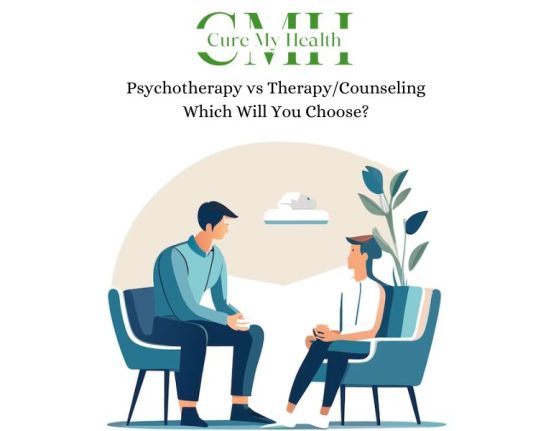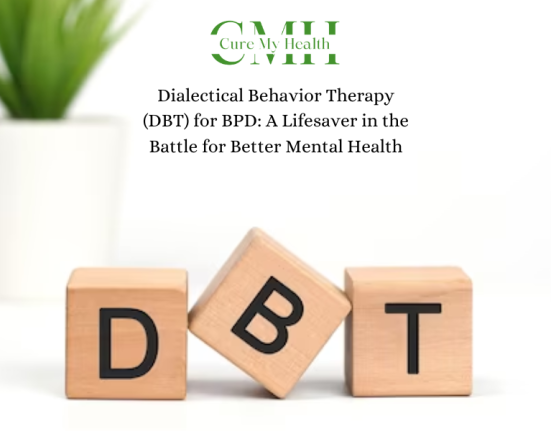In a world where many of us struggle with the challenges of mental illness, finding effective ways to cope and heal is crucial. One approach that has gained recognition and popularity is Dialectical Behavior Therapy or DBT.
This therapy offers a beacon of hope for individuals navigating the complexities of their minds. In this blog post, we’ll explore what DBT is, its purpose, and how it can be a guiding light on the path to mental well-being.
Understanding DBT Therapy
DBT therapy might sound like a tongue-twister, but it’s much simpler than it seems. At its core, DBT is a type of talk therapy that was originally developed to help people with borderline personality disorder. However, it has since been proven effective for a wide range of mental health challenges, including anxiety, depression, and even substance abuse.
Unlike traditional therapy where you just talk and listen, DBT is more like a toolbox filled with practical skills and strategies. It’s like learning new moves in a dance – instead of feeling stuck, you gain the ability to glide through life’s challenges.

The Four Pillars of DBT
Imagine DBT as a table held up by four sturdy legs. These legs represent the four essential pillars of this therapy:
Mindfulness: This isn’t about sitting cross-legged and chanting ‘om.’ Mindfulness is all about paying attention to the present moment. It’s like tasting each bite of your favorite meal instead of gobbling it down. By being fully present, you learn to manage overwhelming emotions and reduce impulsiveness.
Emotion Regulation: Emotions can sometimes feel like a rollercoaster, right? DBT helps you become an emotional maestro. You’ll learn to identify your feelings, understand why they show up and find healthy ways to manage them. It’s like taming wild horses and turning them into loyal companions.
Distress Tolerance: Life can be a stormy sea, tossing us about. DBT equips you with a life jacket – skills to ride out the rough waves without drowning. You’ll discover how to tolerate distressing situations without making them worse. It’s like being a sailor who knows how to navigate through even the fiercest storms.
Interpersonal Effectiveness: Relationships can be as tricky as solving a puzzle. DBT teaches you how to communicate better, set healthy boundaries, and build fulfilling connections. It’s like becoming a diplomat who can bridge the gap between different worlds.

The Purpose of DBT Therapy
Now that we’ve unraveled the basics of DBT, let’s dive into its purpose. Imagine you’re building a strong fortress to protect your mental well-being – that’s exactly what DBT aims to do.
Creating Balance: Life can sometimes feel like a seesaw, swinging wildly between extremes. DBT helps you find the middle ground. It’s like adding just the right amount of spice to a dish – not too bland, not too fiery.
Building Coping Skills: Just like a superhero has a utility belt, DBT equips you with an arsenal of coping skills. When stress knocks on your door, you won’t be defenseless. It’s like having a shield that deflects negativity.
Promoting Self-Awareness: Ever looked in the mirror and really seen yourself? DBT encourages self-reflection and self-acceptance.
Breaking Harmful Patterns: We all have those habits that trip us up. DBT helps you identify and break free from harmful patterns of thinking and behaving. It’s like breaking the chains that have held you back.

Shining a Light on Mental Wellness: DBT and Light Therapy
Just as light can brighten up a dark room, DBT can illuminate the path to mental wellness. And hey, speaking of light, have you heard of light therapy? It’s another tool that complements DBT.
Light therapy, also known as phototherapy, involves exposing yourself to bright light to help with mood disorders like depression.
Just like plants need sunlight to grow, our minds can benefit from a dose of artificial sunlight. Light therapy can work hand in hand with DBT, boosting its effects and helping you feel more balanced and energized.

Continuing the Journey with DBT and Light Therapy
As you embark on your journey with Dialectical Behavior Therapy (DBT), it’s important to remember that progress takes time.
Just like a seed needs water and sunlight to grow into a strong tree, your commitment and practice are the nutrients that nourish your well-being. DBT isn’t a quick fix, but rather a path of self-discovery and growth.
Each pillar of DBT serves as a stepping stone toward a more harmonious life. Mindfulness helps you savor the present moment, while emotion regulation empowers you to manage feelings in a healthy way. Distress tolerance builds your resilience, and interpersonal effectiveness enhances your connections with others.
Light therapy, on the other hand, complements DBT by addressing the physical aspect of mental wellness. By exposing yourself to bright light, especially during darker seasons, you can give your mood a natural boost. Light therapy isn’t invasive – it’s like catching rays of positivity to brighten your day.
In this journey, remember that setbacks are a natural part of growth. Just as a flower needs rain to flourish, your challenges can lead to valuable insights. With DBT, you’re equipped to face these challenges head-on and emerge stronger.
So, if you’re on a journey to better mental well-being, consider giving DBT a try. Think of it as a lantern in the darkness, illuminating your path toward a brighter, happier you.
Conclusion
Dialectical Behavior Therapy might have a long name, but its purpose is beautifully simple – to guide you toward a more balanced, resilient, and fulfilling life. It’s like having a trustworthy compass to navigate the sometimes stormy waters of mental health.
With its four pillars – mindfulness, emotion regulation, distress tolerance, and interpersonal effectiveness – DBT therapy equips you with the skills you need to thrive.














